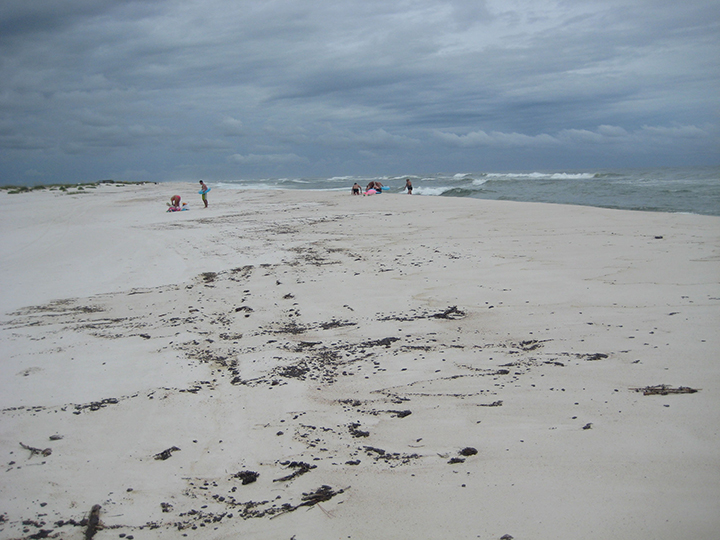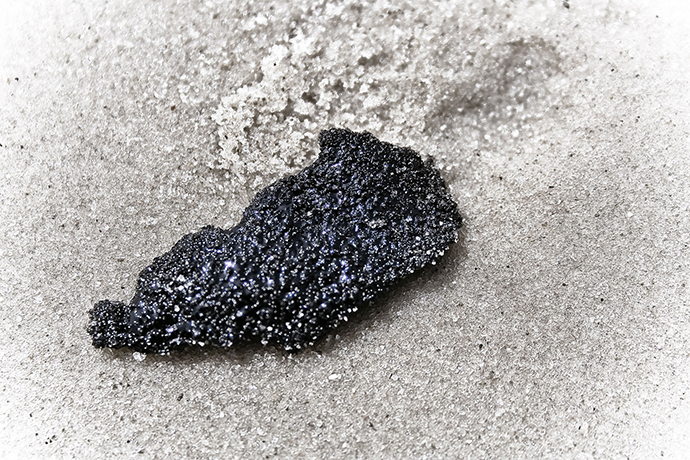
Walking on the beach one of life’s great pleasures. The walking on the beach and ending up with sticky black balls attached to your feet is not so pleasurable.
Tarballs, those sticky black gobs, are often leftover from an oil spill. When crude oil (or a heavier refined product) hits the ocean’s surface it undergoes physical change. The change process is called “weathering.” As the wind and waves stretch and tear the oil patches into smaller pieces, tarballs are formed. Tarballs can be as flat and large as pancakes or as small as a dime. How long do tarballs remain sticky? Are tarballs hazardous to your health? How are tarballs removed from affected beaches? Those and other questions, including how to report new sightings of tarballs, can be found here.

